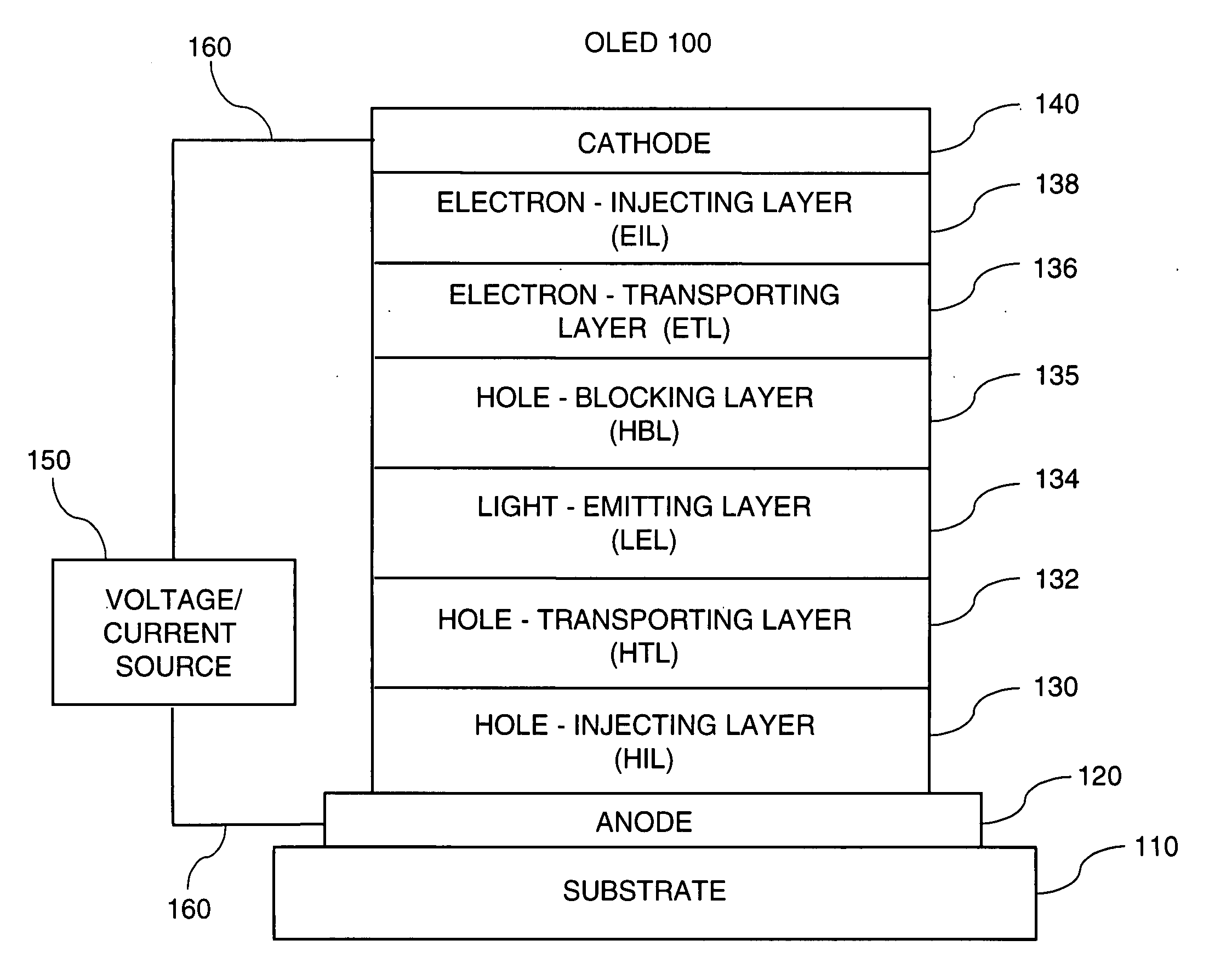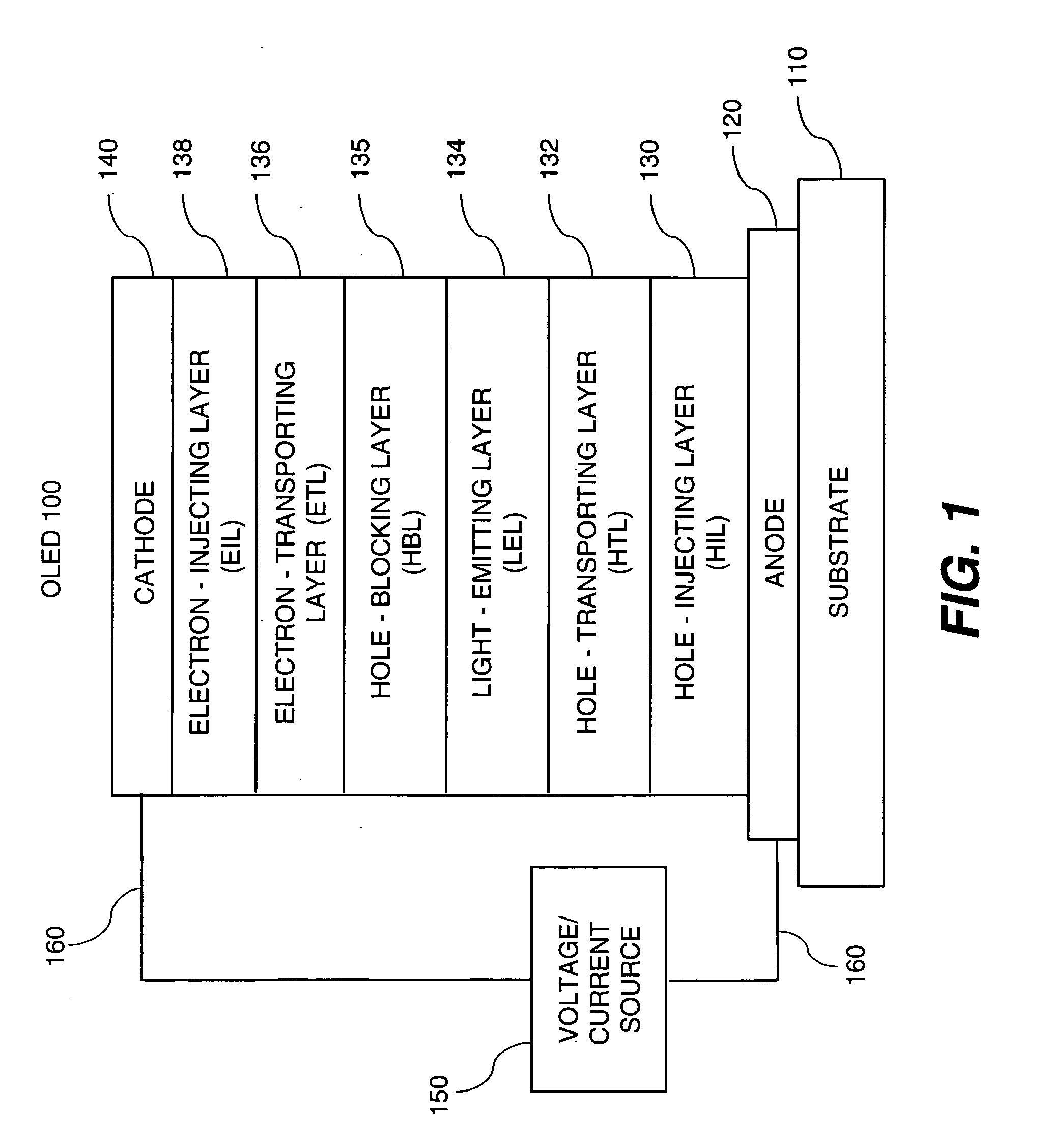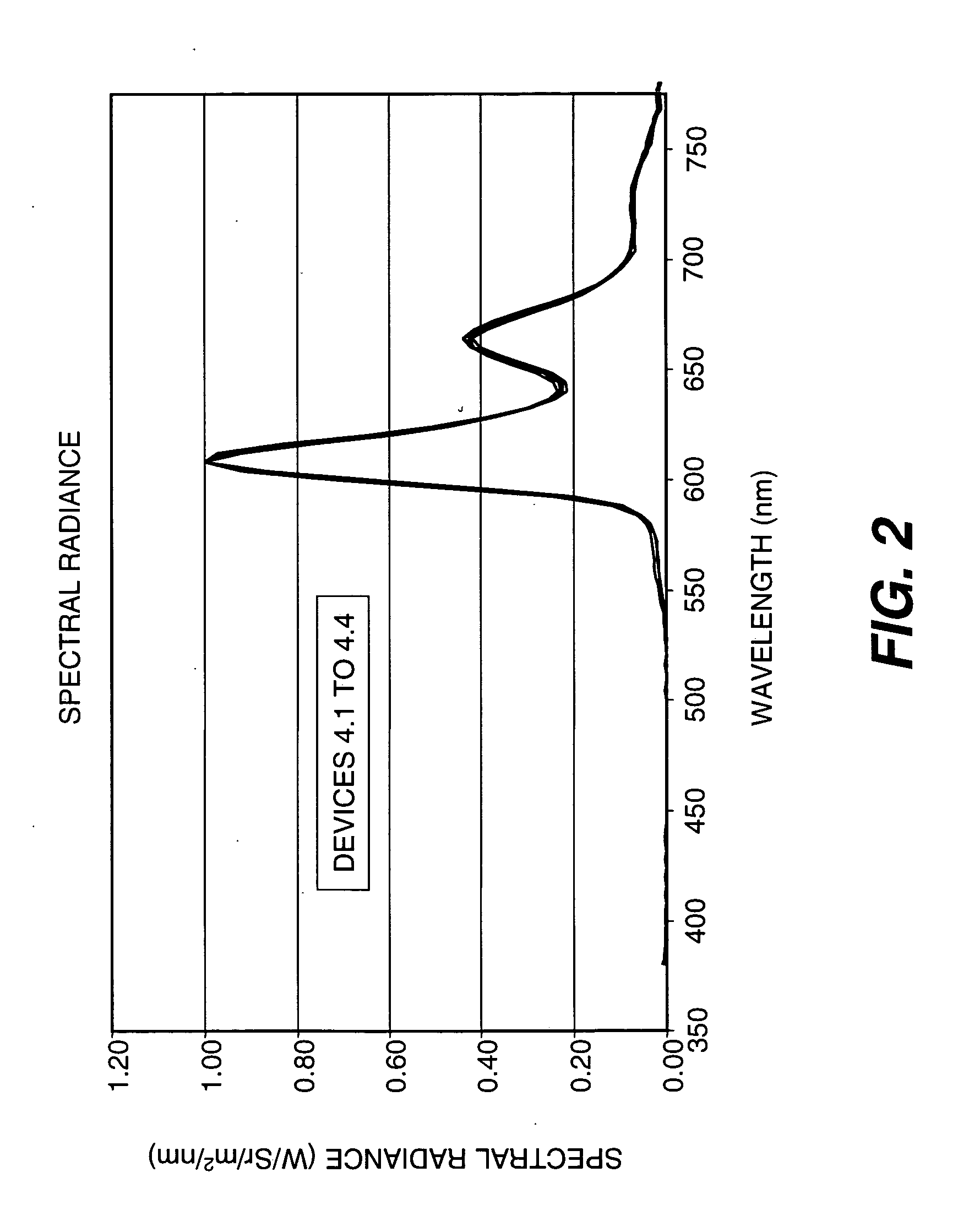OLED device with certain fluoranthene host
a technology of fluoranthene and electroluminescent device, which is applied in the direction of discharge tube luminescnet screen, organic chemistry, natural mineral layered products, etc., can solve the problems of device not having all desired el characteristics in terms of high luminance and stability, performance limitations that have represented a barrier to many desirable applications, etc., to achieve low drive voltage, improve color, and high efficiency
- Summary
- Abstract
- Description
- Claims
- Application Information
AI Technical Summary
Benefits of technology
Problems solved by technology
Method used
Image
Examples
experimental examples
[0337]It should be understood that in the synthesis of organic molecules, particular synthetic pathways can give rise to molecules, either exclusively or as mixtures of molecules, which have the same molecular formulae but differ only in having a particular substituent located at a different site somewhere in the molecule. In other words, the molecules or the molecules in the mixtures may differ from each other by the arrangement of their substituents or more generally, the arrangement of some of their atoms in space. When this occurs, the materials are referred to as isomers. A broader definition of an isomer can be found in Grant and Hackh's Chemical Dictionary, Fifth Edition, McGraw-Hill Book Company, page 313. The synthetic pathway outlined for Example 2 is an example of a pathway that can give rise to isomers by virtue of how the acetylene molecule reacts spatially with the unsymmetrical framework of the 8H-cyclopent[a]acenaphthylen-8-one entity of the second molecule. In this ...
example 1
[0338]Inventive Compound, ETM1 was synthesized as outlined in the following scheme:
7,9-Diphenyl-8H-Cyclopent[a]acenaphthylen-8-one (1)
[0339]7,9-Diphenyl-8H-Cyclopent[a]acenaphthylen-8-one, (aka Acecyclone), (1) was prepared according to the procedure of W. Dilthey, I ter Horst and W. Schommer; Journal fuer Praktische Chemie (Leipzig), 143, (1935), 189-210, in satisfactory yield.
8-[1,1′-Biphenyl]-4-yl-7,10-diphenylfluoranthene (ETM1)
[0340]Acecyclone (12 g, 33.6 mMole) and 4-biphenylacetylene (9.0 g, 50.5 mMole) were heated to gentle reflux in ortho-dichlorobenzene (100 mL) for 2 hours. The reaction was then cooled, treated with methanol (20 mL) and stirred at room temperature for 1 hour. The resulting yellow solid was filtered of, washed well with methanol and dried. Yield of product ETM1, 17.4 g. Before use in device fabrication, ETM1 was sublimed at 220° C. / 10−3 mm Hg.
example 2
[0341]The inventive compound ETM2 was synthesized as outlined in the following scheme:
5-Bromoacenaphthenequinone (2)
[0342]5-Bromoacenaphthenequinone (2) was prepared according to the procedure of Gordon H. Rule and Samuel B. Thompson; Journal of the Chemical Society, (1937), 1761-1763, in satisfactory yield.
3-Bromo-7,9-diphenyl-8H-Cyclopent[a]acenaphthylen-8-one (3)
[0343]1,3-Diphenylacetone (17.5 g, 83 mMole) was dissolved in methanol (240 mL) and heated to 65° C. To the solution was added 5-bromoacenaphthenequinone (2), (20 g, 75 mMole). The resulting well-stirred suspension was then treated with 1M-methanolic KOH (100 ML, 100 mMole) at a fast drip rate, whereupon the dark colored product precipitated immediately. The mixture was then stirred at 65° C. for 1 hour, cooled and filtered. The black solid was washed well with methanol, ether and dried. Yield of product (3), (31 g).
3-Bromo-8-[1,1′-biphenyl]-4-yl-7,10-diphenylfluoranthene (4)
[0344]A mixture of 3-bromo-7,9-diphenyl-8H-Cycl...
PUM
| Property | Measurement | Unit |
|---|---|---|
| Fraction | aaaaa | aaaaa |
| Percent by volume | aaaaa | aaaaa |
| Fraction | aaaaa | aaaaa |
Abstract
Description
Claims
Application Information
 Login to View More
Login to View More - R&D
- Intellectual Property
- Life Sciences
- Materials
- Tech Scout
- Unparalleled Data Quality
- Higher Quality Content
- 60% Fewer Hallucinations
Browse by: Latest US Patents, China's latest patents, Technical Efficacy Thesaurus, Application Domain, Technology Topic, Popular Technical Reports.
© 2025 PatSnap. All rights reserved.Legal|Privacy policy|Modern Slavery Act Transparency Statement|Sitemap|About US| Contact US: help@patsnap.com



